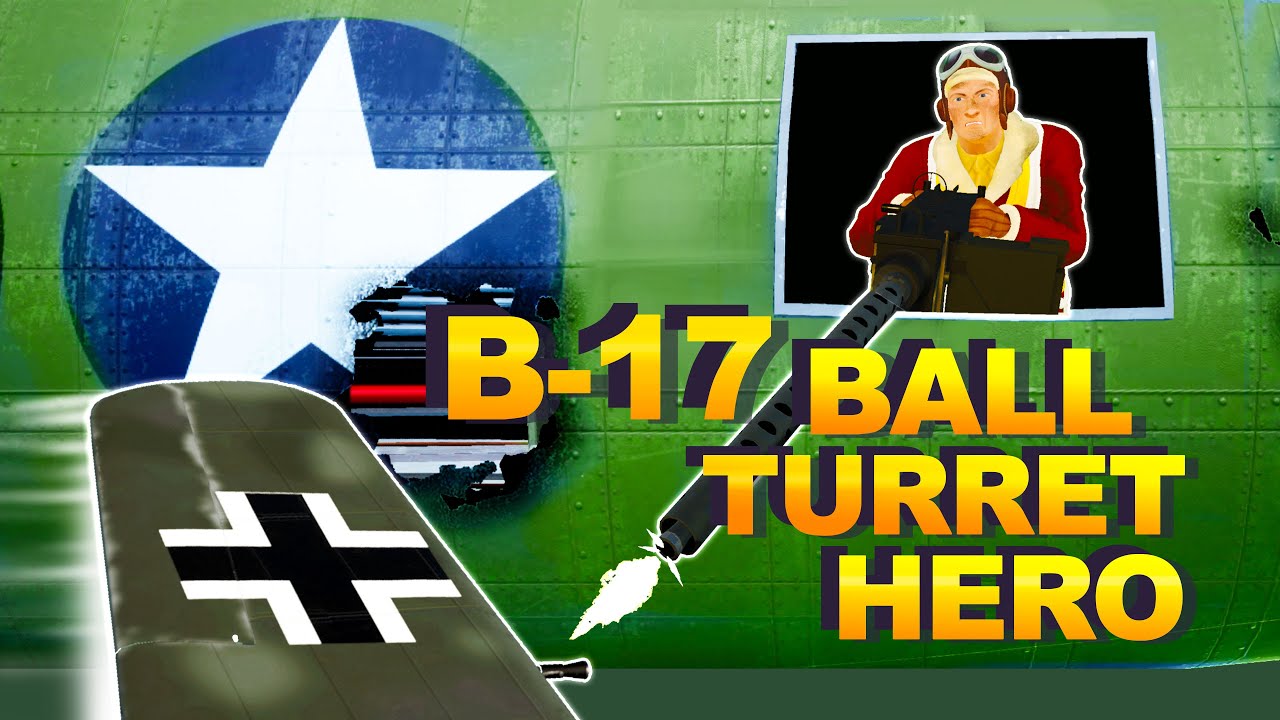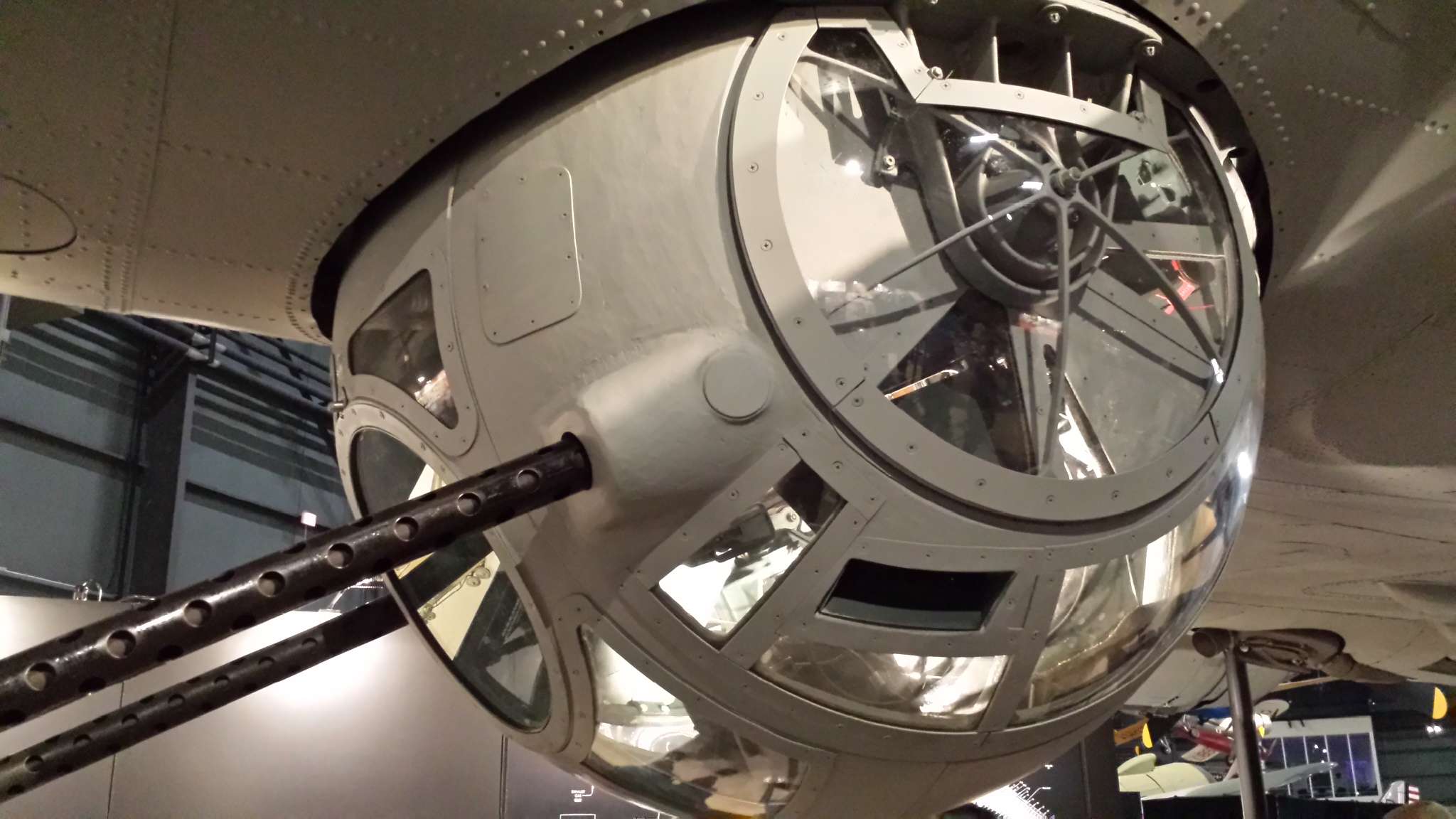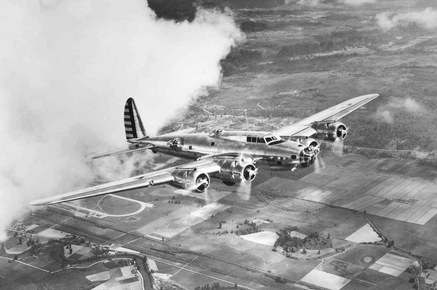It’s May 1, 1943 and 78 B-17’s from the 306th Bomb group are heading over the channel towards France. Their target is the German U-boat pens at St Nazaire. There is heavy cloud cover and the B-17’s let loose their bombs. The mission was shaping up as a huge success. The flak was moderate and the German fighters didn’t seem to attack with any great determination.
The 306th head for home for England, another mission completed… or so they thought. In a B17-F number 649 on his first mission was ball turret gunner
Sergeant Maynard H. Smith. At 5ft 4 in Smith was not a tall man which was an essential requirement for a ball turret gunner. B-17 crews had a mortality rate of 30% but for ball turret gunners it was 60%… although that didn’t buy any favours with the rest of the crew.
Known to the other crewmen as “Snuffy” after a grumpy comic strip character named Snuffy Smith, he was not well liked amongst the men.
For Smith the feeling was mutual who said of the other airmen that they were “people that I had no interest in
but was forced to associate with simply because I was in the army.” In the early afternoon the lead navigator of the B-17s took the formation down to around 2000ft or just over 600 meters over what he thought was the coast of England.
But to the surprise of the American planes lights flash below them and all of a sudden they realise they’re under attack. The German’s let loose with everything they have. Anti-aircraft guns as well as artillery and even small arms fire. It’s a disaster. As the B-17’s are repeatedly hit.
Due to what’s thought is a faulty compass this isn’t England. It’s occupied France and now the bombers
are directly over the city of Brest one of the most heavily defended cities in control of the Germans.
These are flying fortresses… But even a fortress can only take so much punishment and it’s not long before one of the planes goes down, then another and then another. The B-17’s turn trying to avoid the worst of the fire from the ground and head out over the English Channel. But then as the anti aircraft fire trails off into the distance… there was a respite. But a short one as 20 FW 190s scream in and let loose with machine gun and cannon fire. The crews called out the position on the intercom
as the B-17’s machine guns buzz as they take the fight back to the German’s. Smith’s plane, number 649 was towards the edge of the formation and was much more vulnerable than the other fortresses.
In the ball turret, Smith watched in fear as tracer fire snaked towards him. He heard it hit his B-17 and then an explosion rocked the flying fortress. The intercom system went dead as well as all power to the ball turret. Smith called out, what the hell happened? But no answer came. Without power in the turret he was useless and a sitting duck. Manually he cranked the ball turret around so as to get into the main plane and managed to get out. But the relief was short lived.
It looked like an inferno. The wing tank had been shot and gasoline pours into the plane. Towards the front of the plane, the way was completely blocked by fire. Also towards the tail section there is a raging fire. The oxygen supply had been hit and escaping oxygen fanns the fireous flames. With no intercom to the Captain and the way blocked by fire, 3 of the men decided to bail out.
The radio operator jumps and the 2 waist gunners decide they’ve done enough and they too had to get out. One of the gunners got his parachute strap snagged. Smith stepped forward and shouted out “Is it warm enough for you?” as Smith helped the gunner free his parachute strap the gunner didn’t see the joke and bailed out.
Those 3 men were never seen again. Smith was small, but he was tough and determined. With the incredible heat of the fire, he wrapped some cloth around his head, grabbed a fire extinguisher and set to work tackling the flames towards the rear of the plane.
Battling against the heat and through the flames he could make out the tail gunner, Roy Gibson crawling towards him. Gibson had been badly hit. Giving the man first aid, Smith realised that Gibson’s lung had been punctured. In severe pain. Gibson weakly asked Smith if he could see England yet. Smith looked out of the hole in the plane.
There was just sea. “We’re almost home”, he said.
Grabbing the extinguisher Smith went to tackle the fire at the front of the plane.

Eventually overcome by fumes he had to rest… Looking out the side of the plane, his blood ran cold. The FW190’s were back to finish the job. Jumping up Smith manned the waist gun as an FW190 screamed by on it’s attack run. Then he jumped over to the other waist gun to pepper the 190 as it sped away. The fire was so intense now Smith was throwing everything flammable out of the gaping holes in the side of the plane. The inferno was starting to cook the ammunition in the radio compartment and Smith even had to throw some ammunition cannisters out of the plane.
After the fire extinguishers were done, he threw any water he could lay hand onto over the fire and even tried to pee on it to help put out the flames. Anything to keep his bird in the air.
Smith repeatedly went from administering aid to the injured, fighting the fire and all the while fighting off the enemies with the waist guns. Any one of which was a massive trial, but Smith managed all 3.
Just after 3pm the B-17 crossed the English coast. Smith sat exhausted, his clothes smouldering, the compartment completely gutted, the gun mount, and camera were melted… But all the fires were out. For the Pilot Lieutenant Lewis P. Johnson Jr this was his 25th mission. He said “This is a hell of a way to finish”. 7 planes were lost on that day along with the lives of many young men.
All 7 crew that stayed on board 649 including Gibson, survived. Incredibly Smith’s actions saved the plane and the lives of the young men on board. As the medics pulled Gibson off the plane he jokingly requested he be given his purple heart. Smith said “The plane was riddled with about 3,500 bullet holes. It was all burned out in the center. There was nothing but the four main beams holding it together. Ten minutes after it landed, the plane collapsed”. For his actions, Smith was awarded the Medal of Honor. But Smith’s troubles and irreverence to authority continued…
The week that he was awarded the Medal of Honor he was assigned to Kitchen duty as punishment for arriving late to a briefing.
He continued in combat but was grounded due to “combat stress reaction” or PTSD as it’s known today. In an unprecedented move against a medal of honor recipient, Major Thomas F.Witt, the 306th’s operations officer pushed for Smith to be demoted to a private for poor job performance. Witt said that “repeated warnings and reprimands have been a necessity” to get Smith to work at all. On December 17, 1944, Smith was demoted.
Characteristically Smith said of the events, it was “the rotten deal that lousy outfit gave me via the great judgement of Witt, and some of his cohorts”.
He was sent home shortly after. He’d always said to his friend he wouldn’t return home unless they threw a parade for him… and to his surprise and delight, that’s exactly what happened when this hero returned home.






